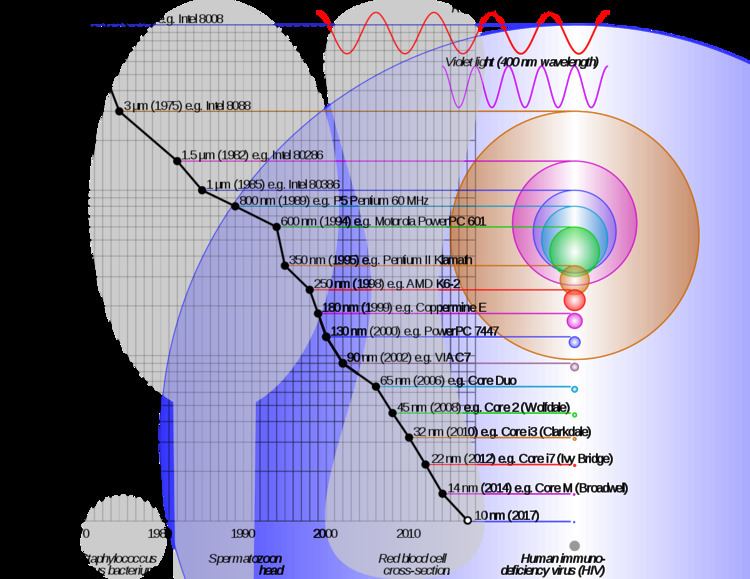 | ||
1970s
The first microprocessors were manufactured in the 1970s. Designers predominantly used NMOS logic and they experimented with various word lengths. Early on, 4-bit processors were common (e.g. Intel 4004). Later in the decade, 8-bit processors such as the Motorola 6502 superseded the 4-bit chips. 16-bit processors emerged by the decade's end. Some unusual word lengths were tried, including 12-bit and 20-bit. The 20-bit MP944, designed for the U.S. Navy's F-14 Tomcat fighter, is considered by its designer to be the first microprocessor. It was classified by the Navy until 1998, meaning that Intel's 4004 was widely regarded as the first-ever microprocessor.
Contents
1980s
In the 1980s, 16-bit and 32-bit microprocessors were common among new designs, and CMOS technology overtook NMOS. Transistor count increased dramatically during the decade.
The home computers of the 1980s predominantly used processors that were introduced in the 1970s. Versions of the Motorola 6502, first released in 1975, and the Zilog Z80 (1976), were at the core of many of the home computers, such as the Commodore 64 and the ZX Spectrum. Even the first-generation IBM PC used a processor from the 1970s, the Intel 8088.
It was not until Intel's 80286 (in the IBM PC AT), and later the 80386, that processors designed in the 1980s drove the computers of the 1980s. These processors offered higher clock speeds and 32-bit word length as well as new operating modes, such as protected mode, that were not available in earlier chips. Critically, protected mode allowed the use of virtual memory and brought the graphical user interface to business computers, beginning with Microsoft Windows 2.0.
1990s
The 32-bit microprocessor dominated the consumer market in the 1990s. Processor clock speeds increased by more than tenfold between 1990 and 1999, and 64-bit processors began to emerge later in the decade. In the 1990s, microprocessors no longer used the same clock speed for the processor and the RAM. Processors began to have a front-side bus (FSB) clock speed used in communication with RAM and other components. Typically, the processor itself ran at a clock speed that was a multiple of the FSB clock speed. Intel's Pentium III, for example, had an internal clock speed of 450–600 MHz and a FSB speed of 100–133 MHz. Only the processor's internal clock speed is shown here.
2000s
64-bit processors became mainstream in the 2000s. Microprocessor clock speeds reached a ceiling because of the heat dissipation barrier. Instead of implementing expensive and impractical cooling systems, manufacturers turned to parallel computing in the form of the multi-core processor. Overclocking had its roots in the 1990s, but came into its own in the 2000s. Off-the-shelf cooling systems designed for overclocked processors became common, and the gaming PC had its advent as well. Over the decade, transistor counts increased by about an order of magnitude, a trend continued from previous decades. Process sizes decreased about fourfold, from 180 nm to 45 nm.
